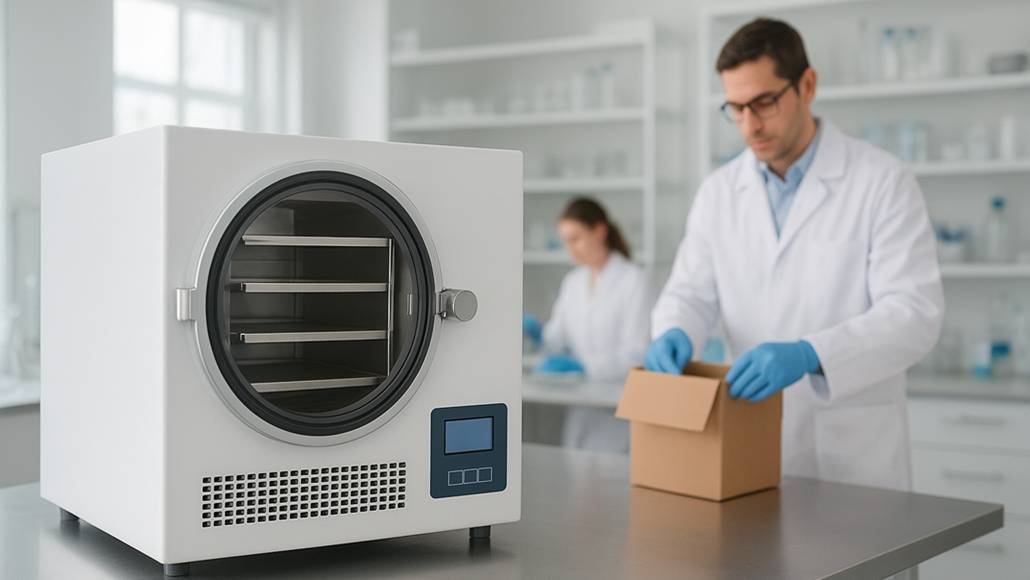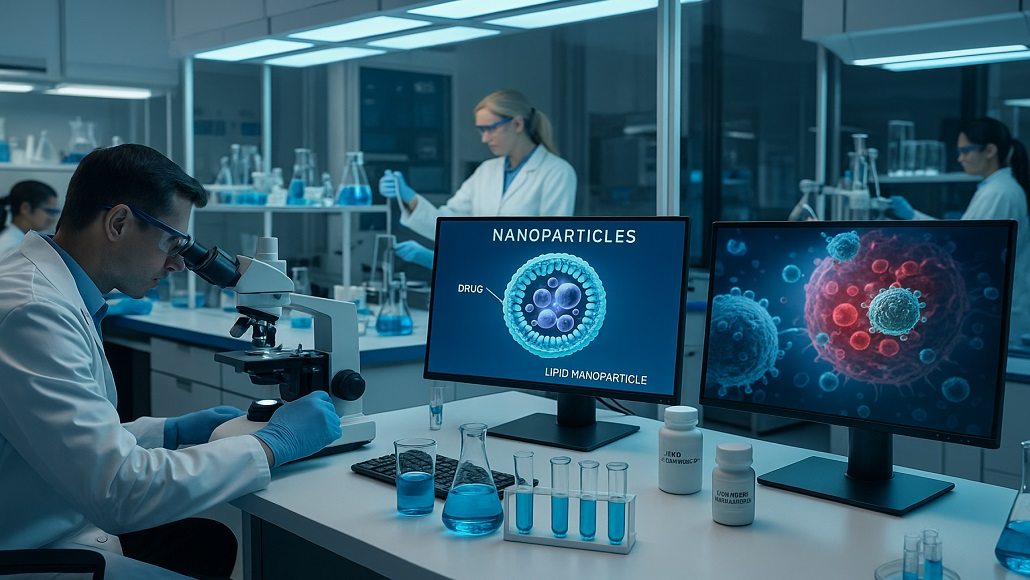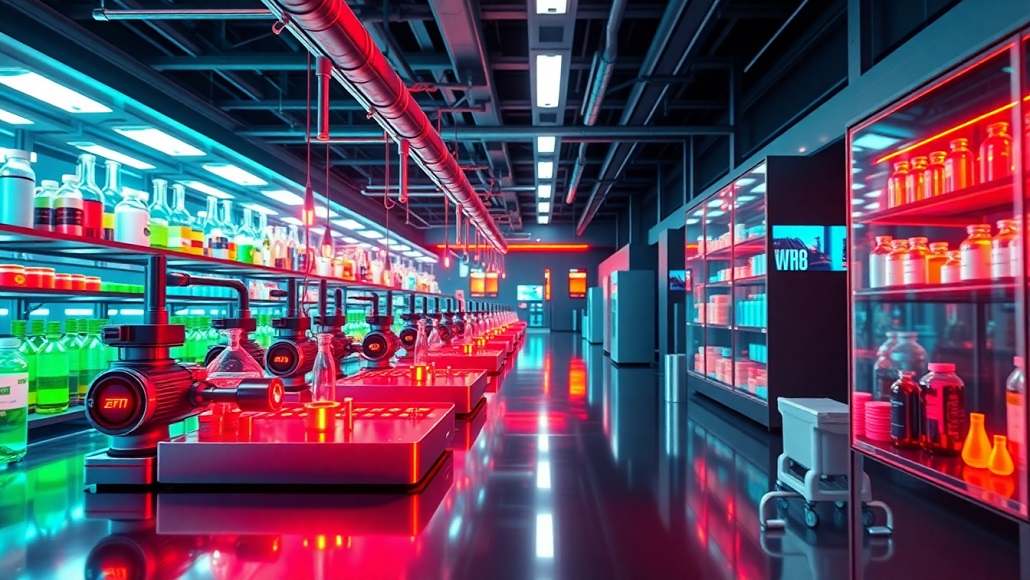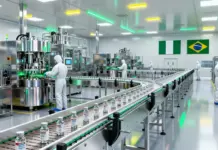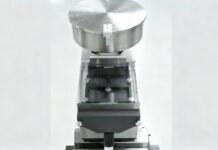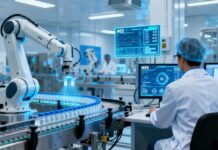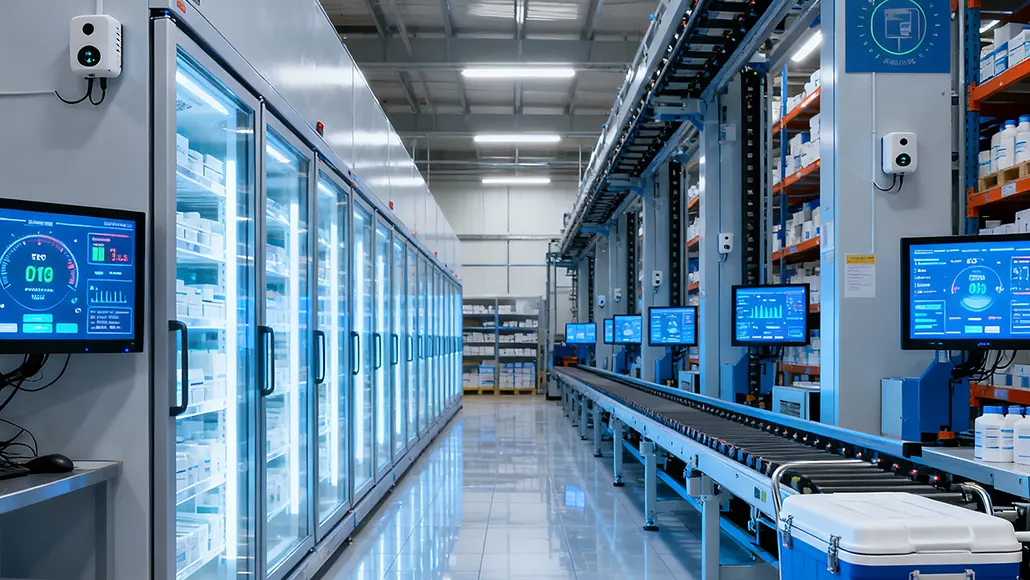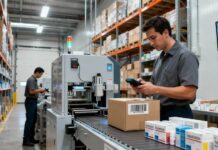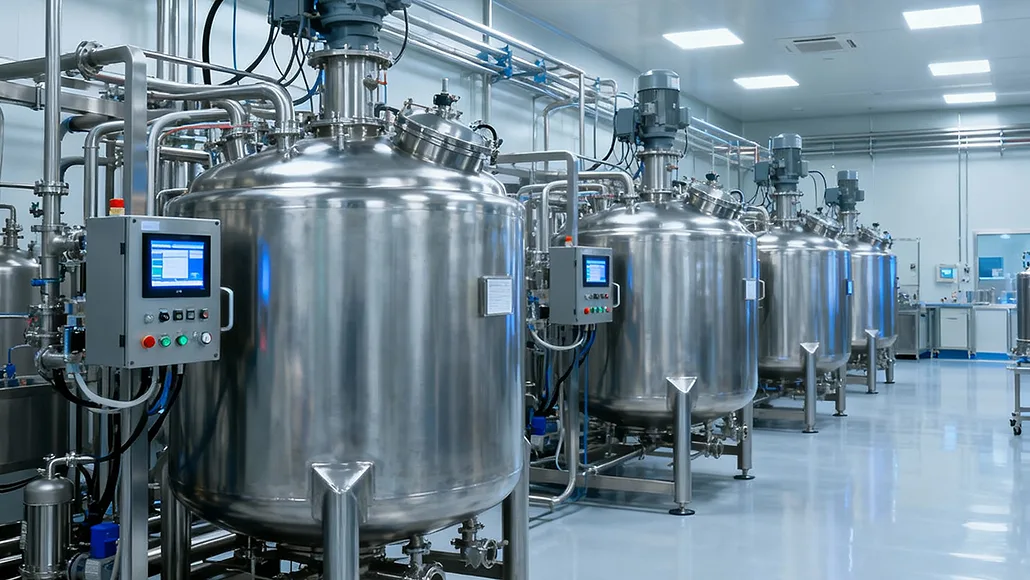Precision Fermentation: Unlocking the Future of Biomanufacturing
The convergence of synthetic biology, advanced fermentation techniques, and computational design has given rise to precision fermentation, a transformative technology reshaping how humanity produces everything from life-saving medicines to essential nutrients. Unlike traditional fermentation processes that yield mixed outputs of cells and metabolites, precision fermentation programs microorganisms to manufacture specific target molecules with extraordinary purity and efficiency. This technological revolution promises to address some of the most pressing challenges facing modern society, from pharmaceutical supply chain vulnerabilities to the environmental impact of conventional manufacturing.
The precision fermentation market stands at an inflection point of explosive growth. Valued at approximately 4.05 billion dollars in 2024, the market is projected to surge to 151 billion dollars by 2034, representing a remarkable compound annual growth rate of 43.6 percent. This extraordinary expansion reflects the technology’s maturation from laboratory curiosity to industrial reality, with an increasing number of products manufactured through precision fermentation reaching consumers and patients worldwide. The technology’s versatility spans multiple industries, but its applications in pharmaceutical and biotechnology sectors represent some of the most impactful use cases.
The Science Behind Precision Fermentation
Precision fermentation fundamentally differs from both traditional fermentation and chemical synthesis approaches. The process begins with identifying the genetic sequence that codes for a desired protein, enzyme, or metabolite. Scientists then introduce this genetic information into a host microorganism, typically bacteria like Escherichia coli or yeast such as Saccharomyces cerevisiae or Pichia pastoris. These genetically programmed microbes function as miniature biofactories, consuming simple feedstocks like glucose or methanol and converting them into complex therapeutic molecules with remarkable fidelity.
The precision element derives from multiple technological advances working in concert. Modern genetic engineering tools enable scientists to optimize gene expression, ensuring host organisms produce target molecules at commercially viable concentrations. Metabolic pathway engineering redirects cellular resources toward desired product synthesis while minimizing byproduct formation. Advanced fermentation control systems maintain optimal conditions for microbial growth and product formation, adjusting temperature, pH, dissolved oxygen, and nutrient delivery in real-time based on continuous monitoring.
Synthetic biology approaches have dramatically accelerated precision fermentation development. Researchers now routinely employ computational tools to design optimized genetic circuits, predict protein structures, and simulate metabolic networks before conducting any laboratory experiments. This design-build-test-learn cycle, powered by artificial intelligence and machine learning algorithms, enables rapid iteration and optimization that would have required decades using traditional trial-and-error approaches. The result is dramatically shortened development timelines and increased probability of commercial success.
The scalability of precision fermentation represents one of its most compelling advantages. A single fermentation tank can produce protein quantities equivalent to thousands of animals or acres of agricultural land. This volumetric productivity, combined with the ability to conduct fermentation in controlled indoor environments independent of weather or seasons, provides unprecedented reliability and consistency. Pharmaceutical companies particularly value this predictability, as it enables them to maintain stable supply chains for critical medicines even during disruptions affecting traditional manufacturing methods.
Applications in Pharmaceutical Manufacturing
The pharmaceutical industry has embraced precision fermentation for decades, though the technology has evolved dramatically from its early applications. Insulin production represents the canonical success story, with genetically engineered bacteria and yeast completely displacing animal-derived insulin starting in the 1980s. This transformation not only addressed ethical concerns about animal welfare but also eliminated batch-to-batch variability inherent in animal extraction, improved product purity, and enabled production scaling that made this life-saving therapy accessible to millions of diabetic patients worldwide.
Therapeutic protein production through precision fermentation has expanded far beyond insulin. Monoclonal antibodies, representing the fastest-growing class of pharmaceutical products, increasingly rely on precision fermentation in mammalian cell systems. These complex proteins require the sophisticated post-translational modifications that only mammalian cells can provide, driving development of specialized fermentation technologies optimized for these demanding cell lines. The resulting therapeutic antibodies treat conditions ranging from cancer to autoimmune diseases, with annual sales measured in hundreds of billions of dollars.
Enzyme production for pharmaceutical applications exemplifies precision fermentation’s versatility. Chymosin, the enzyme traditionally extracted from calf stomachs for cheese production, is now manufactured through fermentation with identical performance characteristics but without animal welfare concerns. Similarly, industrial enzymes used in pharmaceutical synthesis, including specialized proteases and lipases, are produced through precision fermentation at scales and purities impossible through traditional extraction methods. This transformation has created more sustainable supply chains while reducing costs and improving consistency.
Vaccine manufacturing represents an emerging frontier for precision fermentation applications. While traditional vaccine production often requires growing viruses in chicken eggs or mammalian cell cultures, precision fermentation enables production of specific viral proteins that trigger immune responses without requiring intact viruses. This approach, exemplified by some COVID-19 vaccine candidates, offers faster development timelines, enhanced safety profiles, and greater production flexibility. As the technology matures, it promises to transform vaccine manufacturing for seasonal influenza, emerging infectious diseases, and even therapeutic cancer vaccines.
Biomanufacturing Process Development and Optimization
Transforming a promising fermentation strain from laboratory flask to commercial-scale bioreactor requires sophisticated process development that balances multiple competing objectives. Small-scale fermentation experiments, typically conducted in volumes ranging from milliliters to liters, enable rapid screening of genetic constructs and identification of promising candidates. These miniaturized systems, increasingly automated and instrumented with real-time monitoring capabilities, allow researchers to evaluate dozens or hundreds of strains simultaneously, dramatically accelerating strain selection.
Benchtop-scale fermentation, conducted in bioreactors from 150 milliliters to 5 liters, provides the first opportunity for rigorous process optimization. At this scale, researchers can precisely control all critical parameters including temperature, pH, dissolved oxygen, agitation rate, and nutrient feeding strategies. Sophisticated experimental designs systematically vary these parameters to identify optimal operating conditions that maximize product yield and quality. Modern benchtop bioreactors increasingly incorporate advanced sensors that monitor not only standard process parameters but also metabolic indicators like oxygen uptake rates and carbon dioxide evolution that provide real-time insights into cellular metabolism.
Scale-up to pilot and manufacturing scale presents unique challenges that cannot be fully addressed through benchtop optimization alone. Larger bioreactors, ranging from hundreds to tens of thousands of liters, exhibit mixing gradients, oxygen transfer limitations, and heat dissipation challenges that fundamentally differ from benchtop systems. Cells circulating through large fermenters experience fluctuating environments as they move between well-mixed and poorly-mixed zones, potentially stressing metabolism and reducing productivity. Process development teams employ sophisticated computational fluid dynamics modeling and deliberately design experiments that anticipate these scale-up challenges, enabling smoother transitions to commercial production.
Continuous fermentation represents an emerging paradigm that could transform biomanufacturing economics. Traditional fed-batch fermentation operates in cycles, with each batch requiring time-consuming setup, fermentation, harvest, and cleaning steps. Continuous systems, by contrast, operate in steady-state with constant feeding of nutrients and constant product removal. These systems achieve higher volumetric productivity by eliminating non-productive transition periods between batches and can operate in smaller bioreactors, reducing capital expenditure. However, maintaining genetic stability over extended continuous operation and ensuring consistent product quality pose technical challenges that researchers are actively addressing through strain engineering and advanced process control.
Economic and Sustainability Advantages
The economic case for precision fermentation extends across multiple dimensions. Capital costs for fermentation facilities, while substantial, compare favorably to alternative manufacturing approaches when evaluated on a per-kilogram-of-product basis. A fermentation facility can produce diverse products by simply changing the production strain, providing flexibility impossible with dedicated chemical synthesis plants. This versatility enables contract manufacturing organizations to serve multiple clients from a single facility, improving asset utilization and reducing costs.
Operating costs for precision fermentation benefit from the efficiency of biological catalysts. Microorganisms conduct complex chemical transformations at ambient temperature and pressure using simple, inexpensive feedstocks like glucose derived from agricultural commodities. This contrasts sharply with chemical synthesis routes that may require exotic catalysts, high temperatures and pressures, expensive reagents, and extensive downstream purification. While fermentation does require careful environmental control and stringent contamination prevention, total production costs often favor biological approaches, particularly for complex molecules.
The environmental advantages of precision fermentation align sustainability with economic performance. Biological production typically generates less hazardous waste than chemical synthesis, reducing disposal costs while minimizing environmental impact. Water usage, while still substantial, is often lower than chemical processes requiring extensive solvent use. Energy consumption, dominated by aeration and temperature control, benefits from ongoing improvements in bioreactor design and control systems. Lifecycle analyses consistently show that precision fermentation products often have smaller carbon footprints than alternatives, particularly when facilities adopt renewable energy sources.
Supply chain resilience represents an often-overlooked economic benefit of precision fermentation. Products manufactured through fermentation can be produced anywhere fermentation capacity exists, reducing dependence on specific geographic regions or climate conditions. This geographic flexibility proved invaluable during recent supply chain disruptions, as pharmaceutical companies could rapidly shift production between facilities to maintain supply of critical medicines. The ability to rapidly reconfigure fermentation facilities for new products, demonstrated dramatically during COVID-19 vaccine development, provides strategic value beyond traditional economic metrics.
Technological Innovations Driving the Field Forward
Strain engineering technologies have advanced at breathtaking pace, enabling creation of microbial strains with capabilities previously considered impossible. CRISPR gene editing tools allow precise modifications to microbial genomes with efficiency and accuracy that would have seemed miraculous just a decade ago. Scientists routinely delete genes encoding unwanted byproduct pathways, insert entire biosynthetic gene clusters from other organisms, and fine-tune gene expression to achieve optimal productivity. These capabilities have shortened strain development timelines from years to months while expanding the range of molecules accessible through fermentation.
Synthetic biology approaches enable construction of entirely novel metabolic capabilities through rational design. Researchers assemble genetic parts like electronic components, creating biological circuits that sense environmental conditions and respond by adjusting gene expression or metabolic flux. These synthetic systems can implement logic gates, feedback loops, and toggle switches that optimize cellular behavior for industrial production. Some advanced strains incorporate multiple layers of regulation that sense product accumulation, cellular stress, and nutrient availability, automatically adjusting metabolism to maintain productivity throughout extended fermentations.
High-throughput screening technologies enable evaluation of thousands of strain variants, identifying rare mutants with superior performance characteristics. Automated liquid handling systems construct strain libraries, inoculate cultures, sample fermentations, and quantify products with minimal human intervention. Machine learning algorithms analyze the resulting data, identifying patterns that guide design of the next generation of strains. This closed-loop optimization, increasingly autonomous and self-improving, promises to accelerate strain development even further.
Advanced bioprocessing equipment increasingly incorporates real-time monitoring and control capabilities that enable unprecedented process understanding and optimization. Spectroscopic sensors peer inside bioreactors, measuring concentrations of nutrients, metabolites, and products without invasive sampling. These measurements feed into sophisticated control algorithms that adjust operating parameters to maintain optimal conditions despite disturbances or changes in cellular metabolism. Some next-generation systems employ artificial intelligence to predict process trajectories and proactively adjust conditions before problems manifest, achieving consistent performance that exceeds what human operators can accomplish through manual control.
Regulatory Considerations and Quality Assurance
Regulatory frameworks for precision fermentation products have matured alongside the technology, providing clear pathways for commercialization while ensuring product safety and quality. Products manufactured through precision fermentation that are bioidentical to naturally occurring molecules, such as insulin or chymosin, benefit from established regulatory precedents. Regulatory agencies focus primarily on demonstrating that the fermentation-derived product matches natural reference materials in structure, purity, and biological activity, applying the same stringent standards regardless of manufacturing method.
Quality systems for fermentation manufacturing emphasize process control and consistency. Regulatory agencies expect manufacturers to demonstrate deep understanding of how process parameters affect product quality and to implement robust control strategies that maintain parameters within validated ranges. This process validation approach, enshrined in guidelines from the FDA and other regulatory bodies, recognizes that complex biological products cannot be fully characterized through testing alone. Instead, manufacturing control throughout production ensures consistent quality.
Contaminant control represents a critical aspect of fermentation quality assurance. Despite operating theoretically sterile systems, fermentation processes remain vulnerable to contamination by adventitious microorganisms that can outcompete production strains or produce toxins. Pharmaceutical fermentation facilities implement elaborate contamination prevention systems including steam-sterilizable equipment, validated cleaning procedures, environmental monitoring, and rapid contaminant detection methods. These systems, while adding complexity and cost, ensure product safety and protect expensive production batches from loss due to contamination.
Analytical methods for fermentation product characterization have become increasingly sophisticated, enabling detection and quantification of product variants and impurities at parts-per-million or even parts-per-billion levels. Mass spectrometry techniques resolve subtle structural differences in proteins, while chromatography methods separate and quantify process-related impurities. These analytical capabilities support both process development and routine quality control, ensuring fermentation products meet stringent pharmaceutical quality standards. As regulatory expectations continue evolving toward more thorough product characterization, these analytical investments position precision fermentation as a premier manufacturing platform.
Future Outlook and Emerging Applications
The future of precision fermentation extends far beyond current applications, with emerging technologies poised to expand capabilities and create entirely new product categories. Cell-free fermentation systems, which employ purified enzymes rather than intact cells, promise to simplify manufacturing while enabling production of molecules toxic to living cells. These systems, still largely in research phases, could eventually complement traditional cell-based fermentation, providing manufacturers additional tools for specific applications.
The integration of precision fermentation with other biomanufacturing modalities creates powerful synergies. Precision fermentation can produce growth factors required for cultivated meat production, enabling that emerging industry to scale economically. Similarly, fermentation-derived proteins can enhance plant-based food products, providing functional properties difficult to achieve with plant ingredients alone. These cross-industry collaborations demonstrate precision fermentation’s role as an enabling technology platform rather than a standalone solution.
Pharmaceutical applications continue expanding into increasingly sophisticated territory. Precision fermentation of complex natural products, traditionally accessible only through extraction from rare plants or marine organisms, promises to democratize access to potential therapeutics while protecting endangered species and fragile ecosystems. Combinatorial biosynthesis approaches create libraries of related molecules in single fermentation runs, accelerating drug discovery by providing diverse chemical scaffolds for biological evaluation.
The convergence of artificial intelligence with precision fermentation promises to accelerate innovation even further. AI algorithms are beginning to design novel proteins with desired therapeutic properties, predict optimal fermentation conditions, and identify genetic modifications that enhance production. As these computational tools mature and integrate more deeply with laboratory automation, the pace of innovation in precision fermentation will likely accelerate, enabling capabilities that seem impossible today. The technology stands poised to address some of humanity’s most pressing challenges, from sustainable food production to accessible medicines, making precision fermentation a cornerstone of the bioeconomy transforming global manufacturing.



